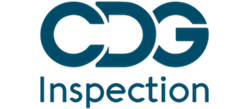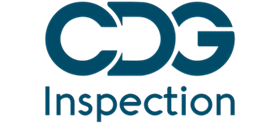Introduction:
In the pharmaceutical industry, ensuring product quality and patient safety is paramount. Adherence to Good Manufacturing Practices (GMP) is a fundamental requirement for pharmaceutical manufacturers to maintain product quality, consistency, and regulatory compliance. One of the most significant assessments of GMP compliance is the audit conducted by the World Health Organization (WHO). A successful WHO GMP audit is essential not only for regulatory approval but also for building a reputation of trust and reliability within the industry. This article will provide a detailed overview of how companies can effectively prepare for a successful WHO GMP audit, covering strategies, key areas of focus, and best practices.
Understanding WHO GMP Audits
A WHO GMP audit evaluates a pharmaceutical manufacturing facility’s compliance with internationally recognized GMP standards. These audits assess various aspects of manufacturing, quality control, quality assurance, and documentation practices. A successful audit demonstrates a company’s commitment to producing safe, effective, and high-quality pharmaceutical products.
Key Areas of Focus
- Documentation and Record Keeping:Accurate and comprehensive documentation is crucial. Ensure that standard operating procedures (SOPs), batch records, validation protocols, and other relevant documents are up-to-date, easily accessible, and well-organized.
- Quality Management System (QMS):A robust QMS demonstrates the company’s commitment to quality. Regularly review and update the QMS to reflect changes in regulations, processes, and industry best practices.
- Facility and Equipment:The manufacturing facility and equipment must be well-maintained, clean, and calibrated. Implement a preventive maintenance program and ensure that equipment logs and maintenance records are readily available.
- Personnel Training:Well-trained personnel are essential. Develop a comprehensive training program that covers GMP principles, SOPs, safety procedures, and job-specific responsibilities.
- Supplier and Vendor Management:Assess and qualify suppliers and vendors to ensure the quality of raw materials and components. Maintain a database of approved suppliers and conduct regular audits of critical suppliers.
- Validation and Qualification:Validation of processes, methods, and equipment is vital. Keep validation protocols and reports up-to-date, conduct regular reviews, and ensure compliance with regulatory requirements.
- Change Control and Deviation Management:Establish a rigorous change control process to manage any changes in processes, equipment, or systems. Promptly investigate and manage deviations and non-conformities.
- Risk Management:Implement a risk management framework to identify, assess, and mitigate risks associated with manufacturing processes, product quality, and patient safety.
Strategies for Successful Preparation
- Internal Audits:Conduct regular internal audits to identify gaps and areas for improvement. These audits simulate external audits and help in addressing issues before the actual audit.
- Mock Audits:Organize mock audits with experienced auditors to simulate the real audit process. This provides valuable insights into the company’s readiness and areas that need improvement.
- Cross-Functional Teams:Form cross-functional teams involving representatives from various departments, including production, quality control, quality assurance, regulatory affairs, and engineering. This ensures a holistic approach to audit preparation.
- Pre-Audit Readiness Plan:Develop a comprehensive readiness plan that outlines tasks, responsibilities, timelines, and resources needed for audit preparation. Assign dedicated personnel to manage the plan.
- Document Review and Update:Thoroughly review all documents related to GMP compliance, making sure they accurately reflect current processes and practices. Update outdated documents and SOPs as needed.
- Training and Education:Ensure that all employees are well-informed about GMP requirements. Conduct regular training sessions to refresh their knowledge and keep them updated on the latest industry trends.
- External Expertise:Consider hiring external consultants with expertise in GMP regulations and audit processes. They can provide an objective assessment of your facility’s readiness and suggest improvements.
Best Practices for a Successful Audit
- Maintain Transparency:Be open and transparent with auditors. Provide accurate information and data, and promptly address any questions or concerns they may have.
- Evidence-Based Approach:Support your claims with evidence. Ensure that all records, documents, and data are readily accessible and well-organized for easy verification.
- Adopt Continuous Improvement:Demonstrate a commitment to continuous improvement. Highlight ongoing efforts to enhance processes, mitigate risks, and optimize product quality.
- Audit Etiquette:During the audit, maintain professionalism and hospitality. Provide comfortable working conditions for auditors and ensure they have access to all required facilities and documents.
- Mock Q&A Sessions:Conduct mock question-and-answer sessions with your internal team to practice answering potential auditor questions. This improves your team’s confidence and ability to provide accurate information.
- Post-Audit Action Plan:After the audit, compile audit findings and develop an action plan to address any identified deficiencies. Implement corrective and preventive actions promptly.
Conclusion
Preparing for a successful WHO GMP audit requires meticulous planning, a thorough understanding of GMP principles, and a commitment to quality. By focusing on key areas, adopting effective strategies, and following best practices, pharmaceutical companies can demonstrate their dedication to producing safe and effective products while upholding international GMP standards. A successful audit not only ensures regulatory compliance but also enhances a company’s reputation within the industry, contributing to long-term success and patient safety.





